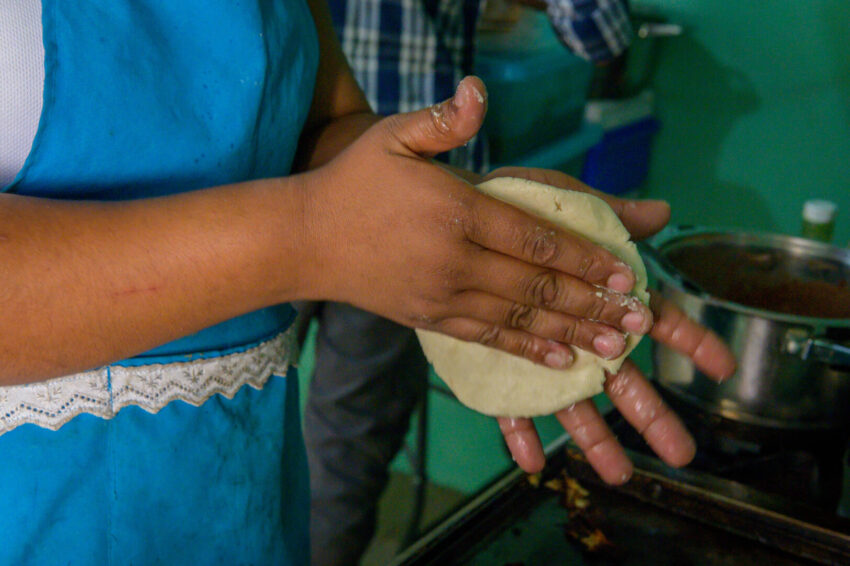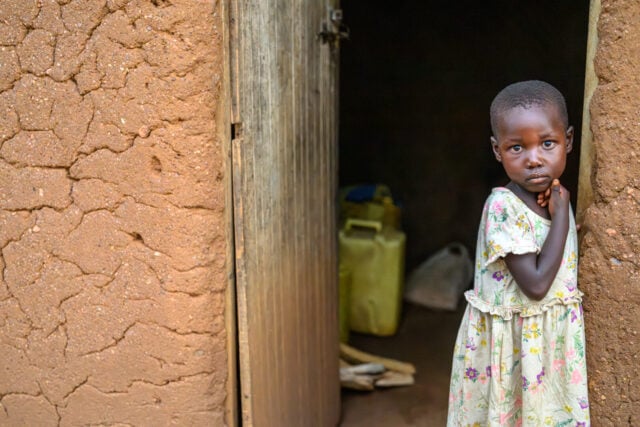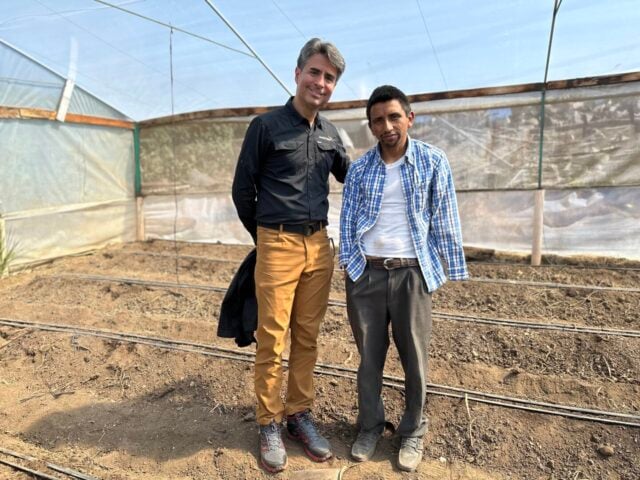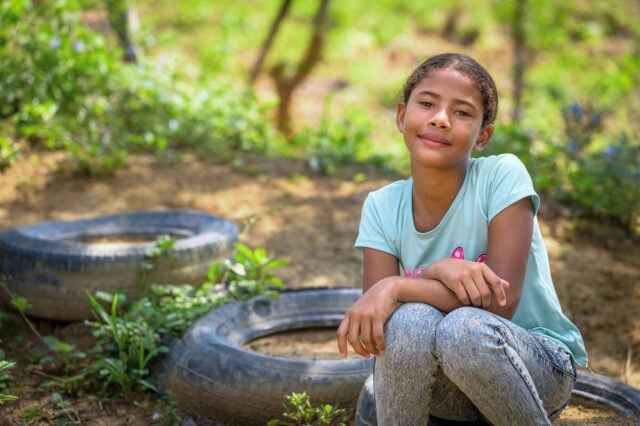Take masa harina — a special flour made from corn that’s been soaked in lime water — and add salt and water to create a dough. Roll it out and fill with cheese, beans, or pork. Lightly fry in a pan until both sides are golden. What do you get? A delicious Central American dish known as pupusas. The dish’s simplicity belies its flavor.
Pupusas originated in El Salvador and western Honduras, and are extremely popular in Central and South America. They’re similar to Mexican gorditas and Venezuelan arepas. A vinegary cabbage and onion mixture called encurtido usually accompanies the pupusas.
Experts believe corn was first domesticated in Central America 4,300 years ago. Since then, it’s been a staple in Central and South American cooking.
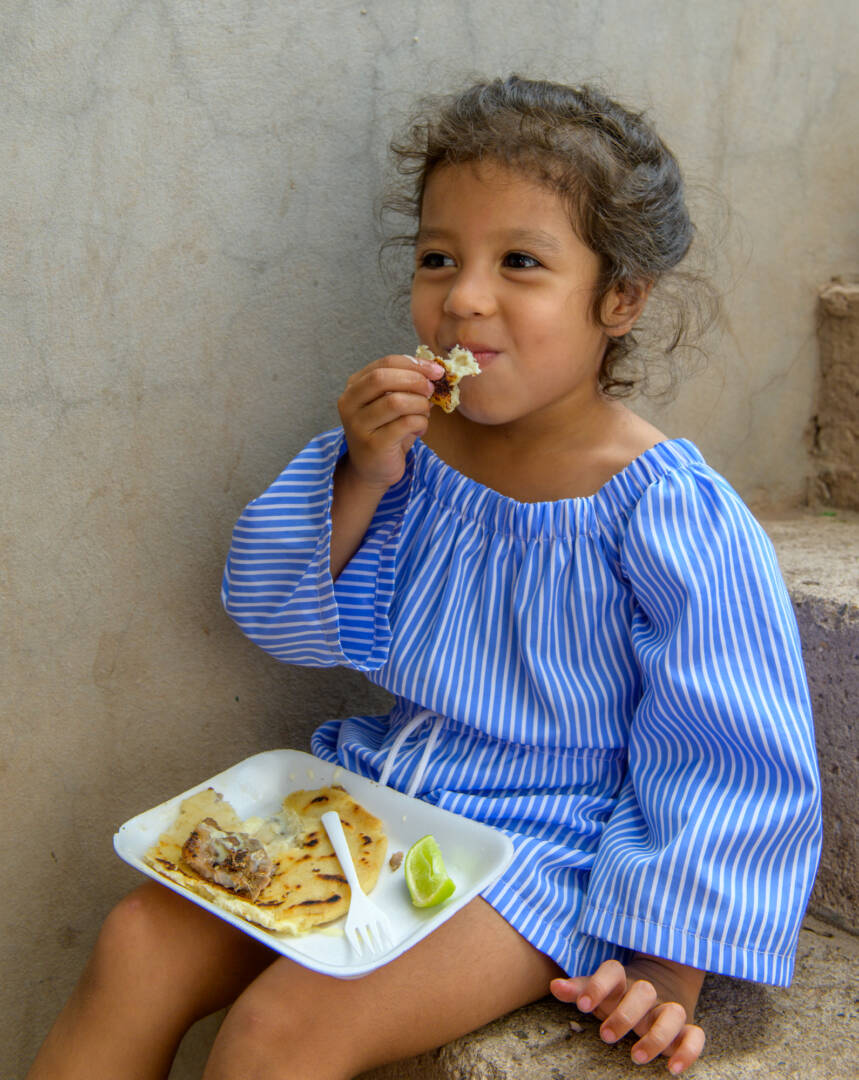
For 4-year-old Ashley and her mother, Heidy, that staple goes a long way toward providing for their family. After receiving training through World Vision’s Youth Ready program — part of World Vision’s Hope for Honduras initiative — Heidy started her own business. She caters for events in Tegucigalpa — the capital of Honduras — and she sells her homemade pupusas in local parks. Ashley reaps the benefits, which sometimes include a tasty lunch of pupusas.
Pupusa recipe
Curtido ingredients
- 2 cups shredded cabbage
- ½ onion, thinly sliced
- 1 carrot, grated
- ½ cup apple cider vinegar
- ½ cup water (more as needed)
- ½ tsp salt
- ¼ tsp dried oregano
- Pinch of red pepper flakes
Pupusa ingredients
- 3 cups masa harina
- ½ tsp salt
- 1 ½ cups warm water
- 1 ½ cups shredded mozzarella cheese
- Vegetable oil for sautéing
Curtido instructions
- Make the curtido at least 24 hours before you want to serve the pupusas.
- Bring a large pot of lightly salted water to a boil. Add cabbage and cook uncovered until slightly softened — about 3 minutes.
- Remove from heat and drain in a colander. Immediately submerge in ice water to for a few minutes to stop the cabbage from cooking further. Drain.
- Mix the cabbage, onion, carrot, vinegar, water, salt, oregano, and red pepper flakes.
- Refrigerate in a large bowl covered with plastic wrap. The mixture should be submerged in the liquid; if needed, add a little more warm water.
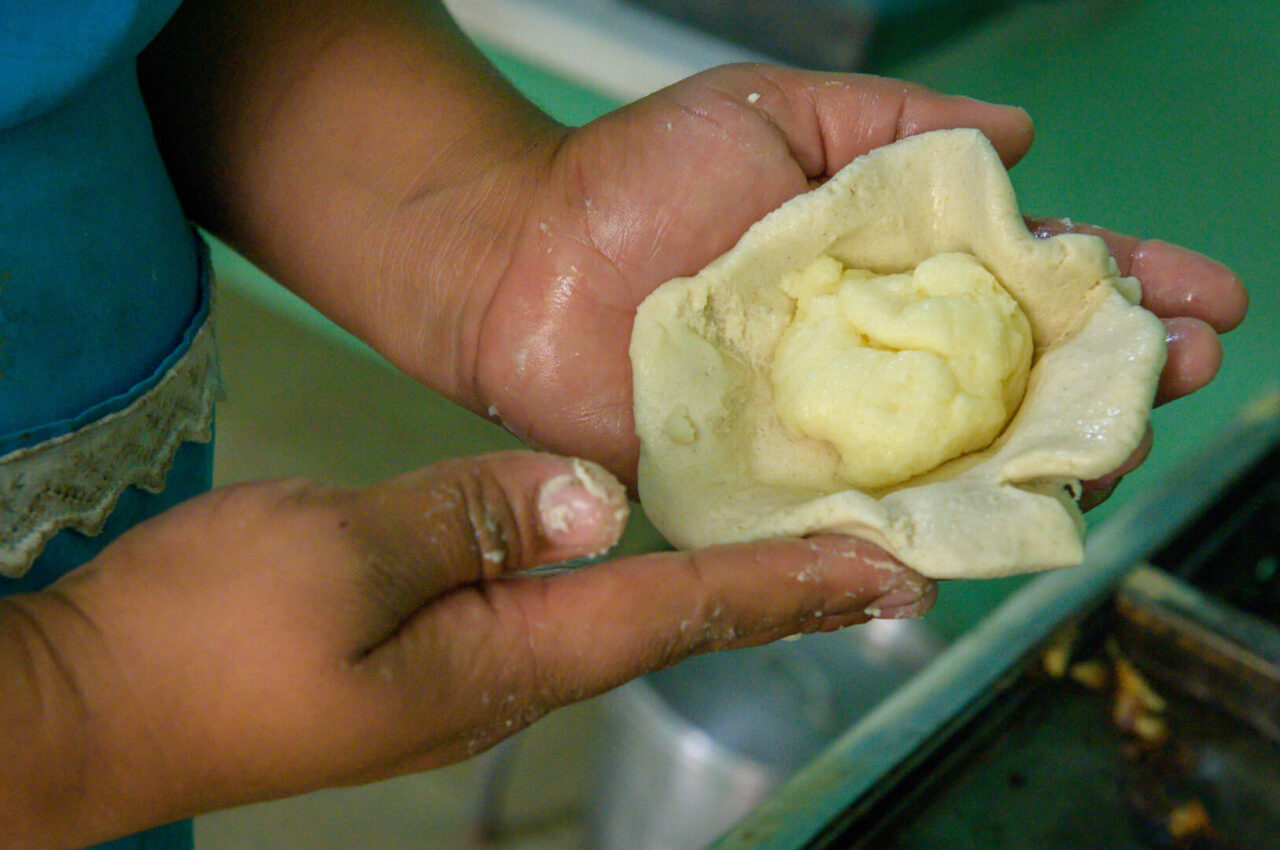
Pupusa instructions
- Mix the masa harina, salt, and warm water to form a soft dough. If the dough is too dry, add more water, one tablespoon at a time. The dough should not crack when you form it into a ball. When the consistency is right, knead the dough for a minute and then cover with a clean, damp towel or plastic wrap. Let rest 15 minutes.
- Grease your hands with a little bit of oil and form the dough into 8 balls. Pat or roll each ball into a disc about ¼ inch thick. Place as much shredded mozzarella in the center of the disc as it will hold. Carefully pinch the dough around the cheese to form into another rough ball. Then re-flatten into a disc about 4″ across.
- As you work, store the already-shaped pupusas under a damp cloth to keep them from drying out.
- Lightly grease a nonstick or cast-iron pan with oil and cook the pupusas for 4 to 5 minutes per side, till golden brown.
- Serve the pupusas hot, with curtido on the side.
Recipe adapted from Parsnips & Pastries and Allrecipes.
